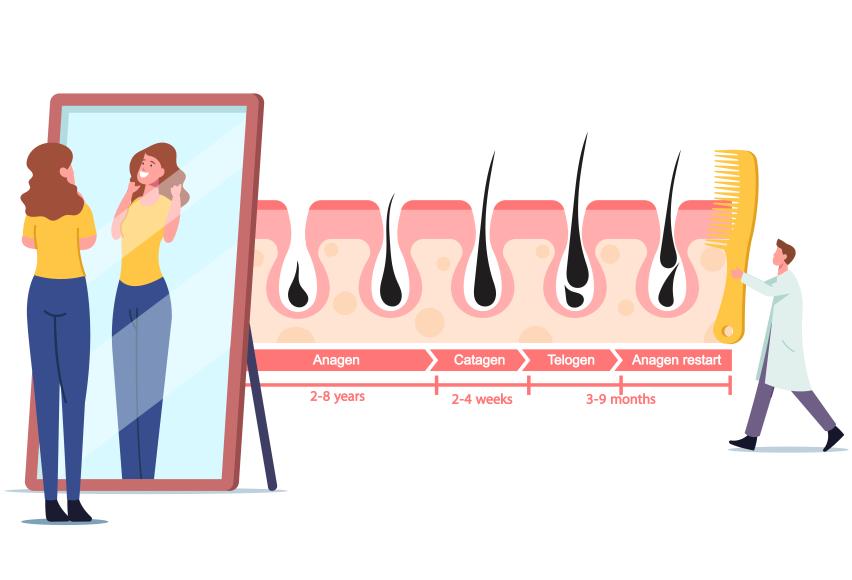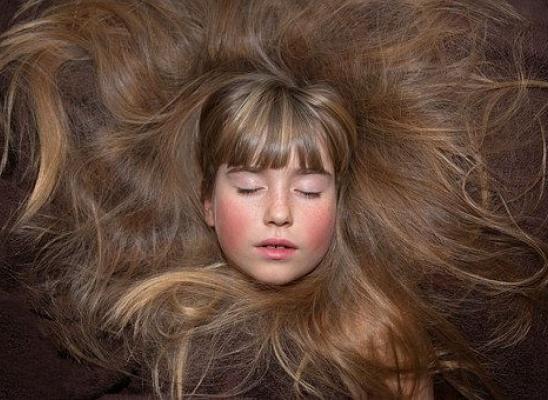Regrowing Your Hair After Trich: Are there Options?

Online test
Find out the severity of your symptoms with this free online test
Hair loss is something that a lot of people deal with and for lots of reasons. Sometimes, the loss resolves itself. For people living with trichotillomania, stemming or reversing hair loss is more complicated.
Trichotillomania, commonly referred to as hair pulling, is a body-focused repetitive behavior characterized by compulsive hair pulling that results in substantial hair loss. It is generally considered to be a chronic condition, but some people are able to achieve recovery.
“Can I grow my hair back?” It’s the question you may be asking now that you’re not actively pulling. Sometimes, with time and gentle care, hair will re-establish its growth cycle. For some, regrowth is a little more complicated.
Repetitive pulling over months or even years does more than simply remove hair. The act of pulling can damage the hair shaft and its follicle. These structures may need time to heal and may require some extra help. In some cases, the damage may be severe leaving some areas unable to regenerate.
The good news is, for many people recovering from trichotillomania, hair regrowth is possible. Whether you’re new to recovery and ready to regrow your hair or wanting to boost your hair’s regrowth, there are things you can do to help your hair be in its healthiest state possible and encourage regrowth.
Understanding the Hair Regrowth Cycle
Waiting for your hair to grow can seem like an eternity. The truth is hair growth is actually cyclical and it can take months to see hair growth. Just when it seems like it’s not working, you might begin to see baby hairs!
The hair growth cycle progresses through three stages:
1. Anagen (growing stage)
Accounting for about 90% of the growth cycle, the anagen stage lasts about 3-5 years. It’s the hair follicles time of active growth.
2. Catagen
This is an intermediate period lasting about 1-2 weeks when the hair follicles are preparing to rest. During this stage, the hair follicles are beginning to collapse in preparation for the next phase.
3. Telogen (resting or shedding stage)
You might not want to even think of losing even one strand of hair, but normal hair growth involves shedding. The Telogen stage is a time when old hairs will be shed making way for new, healthy hairs in the next Anagen stage. The Telogen stage lasts about 3-4 months. The cycle then repeats.
The cycle is a slow process. Hairs are constantly going through the cycle, not always all at once. So, you may see some growth and some shed.
Stop Pulling to Start Growing
To support regrowing your hair, you have to give it a chance to grow. If you continue to pull, you risk further damage to your hair and those hard-won baby hairs you’ve grown never have a chance to grow. But knowing you need to stop and being able to do it isn’t easy. Treatment can help you get to a place of recovery.
While there is no “cure” for trichotillomania, there are treatments that can help to reduce the pulling behavior and help you move towards recovery. Habit Reversal Training (HRT) is perhaps the most studied and often a first line therapy. However, the results of HRT tend to be short-term, and relapse is common. Other therapies like Acceptance and Commitment Therapy (ACT) and other cognitive behavioral therapies address the emotional aspects of hair pulling as well. Research suggests that treatments that address both the behavioral and the emotional aspects of hair pulling may be the most effective in achieving long-term recovery.
Giving your hair a chance to grow is an important first step. Here’s what else you can do:
- Supplements - There’s no shortage of supplements that may help with hair regrowth. It can be overwhelming to decide which ones are right for you. What does the science say?
Many of the popular vitamins associated with hair growth have been studied and shown to have little impact on hair regrowth. However, one vitamin does seem to have a link to hair loss associated with trichotillomania. Some research suggests that vitamin D supplementation may be helpful in regrowing hair in people with trichotillomania but more research is needed.
If you’re considering supplementation, it’s important to discuss your options with your healthcare provider. Even “vitamins and minerals” can have side effects that you want to consider before choosing.
- Microneedling - Microneedling is a dermatological procedure that creates tiny punctures on the skin to stimulate the release of factors that promote wound-healing and angiogenesis (new blood vessel growth). Typically, the procedure uses a roller covered in small, medical-grade needles. For people with trichotillomania, microneedling has been shown to be helpful in stimulating hair regrown over time. It is thought to have the added benefit of simulating the pulling sensation and satisfy the urge to pull.
- Medication - There are a number of medications (oral and topical) that may be helpful in hair regrowth. Minoxidil is a popular and widely used topical solution that is most often prescribed for hair regrowth. Whether medication might be helpful for you is a discussion to have with your healthcare provider.
- Gentle Hair Care – New growth hair can be quite fragile. Adopting a gentle hair care routine can help to nurture your scalp and keep it healthy. Gentle massage can help stimulate blood flow. Gentle hair products can keep your hair and scalp clean and healthy. Some research suggests that essential oils may be helpful in promoting hair growth too.
- Hair Restoration – You’ve stopped pulling but your hair still won’t grow. Sometimes the damage to hair follicles leaves your hair unable to recover. A hair restoration procedures may be an option to consider. However, even hair restoration won’t be successful if you continue to pull.
Regrowing your hair can help you regain a sense of control over your hair pulling and boost your self-confidence. Specialized treatment can help you to address underlying issues and move towards recovery, paving the way for your hair to recover as well. There are options and there is hope for recovery and for your hair!
References
1. Hair growth cycle. (2021, February 11). Harley Street Hair Clinic. https://www.hshairclinic.co.uk/hair-loss/all-about-hair/hair-growth-cycle
2. Walther, M. R., Ricketts, E. J., Conelea, C. A., & Woods, D. W. (2010). Recent Advances in the Understanding and Treatment of Trichotillomania. Journal of cognitive psychotherapy, 24(1), 46–64. https://www.ncbi.nlm.nih.gov/pmc/articles/PMC4674792/
3. Do Vitamins Really Promote Hair Growth? A Systematic Review of The Science. (2023, February 27). The Wimpole Clinic. https://wimpoleclinic.com/blog/vitamins-for-hair-growth-the-complete-guide-to-hair-supplements/#Best_vitamins_for_hair_growth_hair_count_change
4. Titus-Lay, E., Eid, T. J., Kreys, T. J., Chu, B. X. J., & Malhotra, A. (2020). Trichotillomania associated with a 25-hydroxy vitamin D deficiency: A case report. The mental health clinician, 10(1), 38–43. https://www.ncbi.nlm.nih.gov/pmc/articles/PMC6956975/#:~:text=In%20addition%20to%20reducing%20the,analogs%20to%20stimulate%20hair%20regrowth
5. Christensen, R. E., Schambach, M., & Jafferany, M. (2022). Microneedling as an adjunctive treatment for trichotillomania. Dermatologic Therapy, 35(11). https://onlinelibrary.wiley.com/doi/10.1111/dth.15824
6. Trichotillomania: tips for hair regrowth. (2022, September 7). The Wimpole Clinic. https://wimpoleclinic.com/blog/trichotillomania-tips-for-hair-regrowth/
7. Kalish, R. S. (1999). Randomized trial of aromatherapy: Successful treatment for alopecia Areata. Archives of Dermatology, 135(5), 602-b-603. https://doi.org/10.1001/archderm.135.5.602-bhttps://jamanetwork.com/journals/jamadermatology/fullarticle/189618
Online test
Find out the severity of your symptoms with this free online test
Start your journey with TrichStop
Take control of your life and find freedom from hair pulling through professional therapy and evidence-based behavioral techniques.
Start Now



